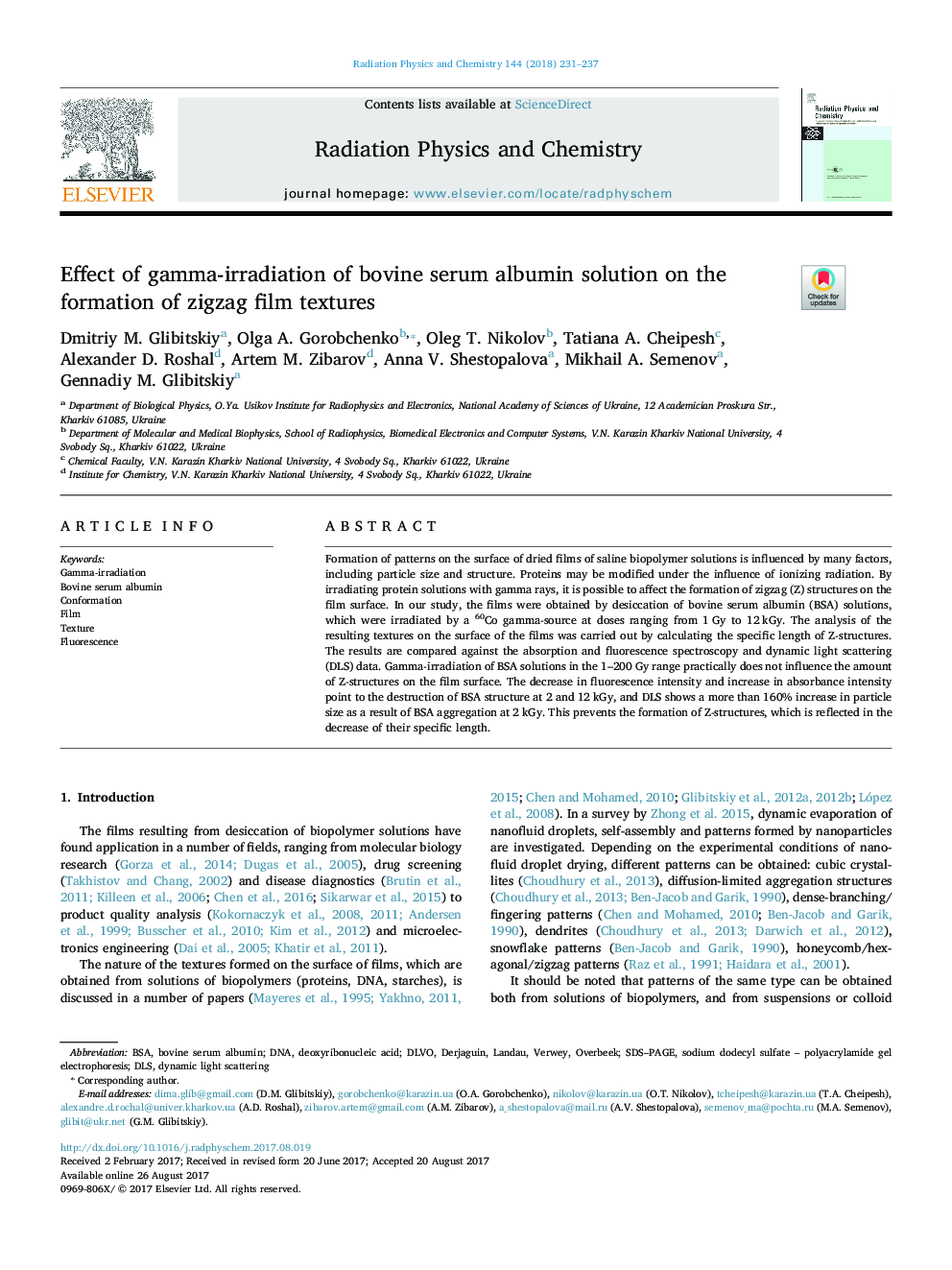| Article ID | Journal | Published Year | Pages | File Type |
|---|---|---|---|---|
| 8251857 | Radiation Physics and Chemistry | 2018 | 7 Pages |
Abstract
Formation of patterns on the surface of dried films of saline biopolymer solutions is influenced by many factors, including particle size and structure. Proteins may be modified under the influence of ionizing radiation. By irradiating protein solutions with gamma rays, it is possible to affect the formation of zigzag (Z) structures on the film surface. In our study, the films were obtained by desiccation of bovine serum albumin (BSA) solutions, which were irradiated by a 60Co gamma-source at doses ranging from 1Â Gy to 12Â kGy. The analysis of the resulting textures on the surface of the films was carried out by calculating the specific length of Z-structures. The results are compared against the absorption and fluorescence spectroscopy and dynamic light scattering (DLS) data. Gamma-irradiation of BSA solutions in the 1-200Â Gy range practically does not influence the amount of Z-structures on the film surface. The decrease in fluorescence intensity and increase in absorbance intensity point to the destruction of BSA structure at 2 and 12Â kGy, and DLS shows a more than 160% increase in particle size as a result of BSA aggregation at 2Â kGy. This prevents the formation of Z-structures, which is reflected in the decrease of their specific length.
Keywords
Related Topics
Physical Sciences and Engineering
Physics and Astronomy
Radiation
Authors
Dmitriy M. Glibitskiy, Olga A. Gorobchenko, Oleg T. Nikolov, Tatiana A. Cheipesh, Alexander D. Roshal, Artem M. Zibarov, Anna V. Shestopalova, Mikhail A. Semenov, Gennadiy M. Glibitskiy,
